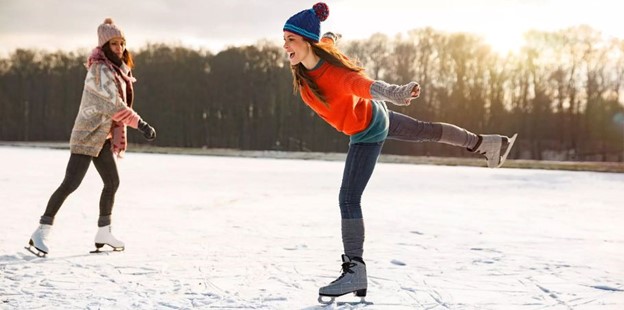Ice skating is more than just gliding across a frozen surface; it’s a dance of grace, skill, and history. From its humble beginnings on natural ice to becoming an Olympic spectacle, the story of ice skating captivates enthusiasts around the world. Whether you’re a beginner lacing up your first pair of skates or an experienced athlete perfecting your routine, there’s something magical about this sport that draws people in.
With each stroke across the rink, you join millions who have embraced this exhilarating activity through generations. But what is it about ice skating that has transcended time and cultures? Let’s dive deeper into its origins, evolution, and impact on society while exploring why this incredible sport continues to flourish today.
The Origins of Ice Skating
Ice skating dates back thousands of years, with evidence suggesting it originated in Scandinavia. The earliest skates were made from animal bones and crafted for traversing frozen lakes rather than sport.
Archaeological findings reveal that the first users glided on natural ice to hunt and trade. These primitive designs evolved as cultures adapted the concept. By medieval times, wooden blades and leather straps became common, paving the way for recreational skating.
In the 17th century, Dutch painters showcased ice skating as a festive activity, solidifying its place in European culture. This period marked the transition from necessity to leisure.
As nations began competing against one another during winter festivals, ice skating gained momentum as an organized sport. From early bone skates to elegant metal blades, these origins set the stage for what would become a beloved pastime worldwide.
Evolution of Ice Skating Techniques and Equipment
Ice skating has transformed dramatically since its inception. Early skates, made of wood or bone, were simple and lacked the elegance we see today. As time progressed, metal blades emerged, enhancing speed and maneuverability.
The 19th century marked a pivotal moment with the introduction of longer blades designed for racing. This innovation allowed skaters to glide faster across ice surfaces, changing the competitive landscape forever.
With advancements in technology came improved materials. Modern blades are crafted from stainless steel and carbon fiber composites. These innovations ensure not only durability but also precision in movement.
In terms of techniques, figure skating evolved into an art form featuring jumps and spins that captivate audiences worldwide. Meanwhile, hockey players adopted more aggressive styles emphasizing quick turns and powerful strides.
The Rise in Popularity of Ice Skating
Ice skating has experienced an incredible surge in popularity over the past few decades. Once viewed as a niche winter activity, it has transformed into a mainstream sport enjoyed by millions around the globe.
This rise can be attributed to several factors. Accessibility has played a significant role; many communities now offer public rinks and affordable rental skates. Social media platforms have also amplified its visibility, showcasing stunning performances and fun moments that entice new participants.
Television broadcasts of competitions like the Winter Olympics have further fueled interest. Viewers are captivated by the grace and athleticism of elite figure skaters, inspiring them to lace up their own skates.
Famous Figures in the World of Ice Skating
Ice skating has produced a dazzling array of talent over the years. Legends like Peggy Fleming and Scott Hamilton have left an indelible mark on the sport, captivating audiences with their grace.
Fleming, a three-time world champion, brought artistry to competition. Her performances combined athleticism with elegance, inspiring countless young skaters.
Scott Hamilton is another stalwart figure who charmed fans with his infectious energy. His Olympic gold in 1984 solidified his status as one of ice skating’s all-time greats.
In recent times, stars like Yuzuru Hanyu have taken center stage. The Japanese skater’s unique blend of technical skill and emotional storytelling continues to elevate the sport globally.
Health Benefits of Ice Skating
Ice skating is more than just a fun winter pastime; it’s also an excellent workout. Gliding across the ice engages multiple muscle groups, helping to tone your legs, core, and even your arms.
The rhythmic movements can boost cardiovascular health, increasing heart rate while promoting endurance. Skating regularly improves balance and coordination as skaters learn to shift their weight fluidly.
This low-impact activity is gentle on joints compared to running or high-intensity workouts. It’s perfect for all ages and fitness levels who want to stay active without excessive strain.
Challenges and Controversies in the Sport
Ice skating, while a beloved sport, has faced its share of challenges and controversies. One significant issue is the increasing pressure on athletes to perform flawlessly. This often leads to intense mental strain, especially among younger skaters.
The judging system itself has also sparked debates. Many argue that subjective scoring can undermine fair competition. Instances of bias have arisen, leading to accusations of favoritism toward certain countries or styles.
Impact and Legacy of Ice Skating on Culture and Society
Ice skating has woven itself into the fabric of many cultures, becoming a symbol of winter traditions. From community rinks to Olympic arenas, it unites people across generations. The sport has inspired art and literature, showcasing the beauty and grace of movement on ice. Iconic performances often resonate with audiences, transcending language barriers.
Ice skating also promotes inclusivity. It invites everyone—regardless of age or skill level—to share in joyous experiences. Many communities come alive during seasonal skates, creating bonds among participants.
Conclusion
Ice skating has a rich tapestry woven from history, culture, and athleticism. From its humble beginnings on frozen lakes to the dazzling performances seen in Olympic arenas today, the sport has evolved significantly over centuries.


